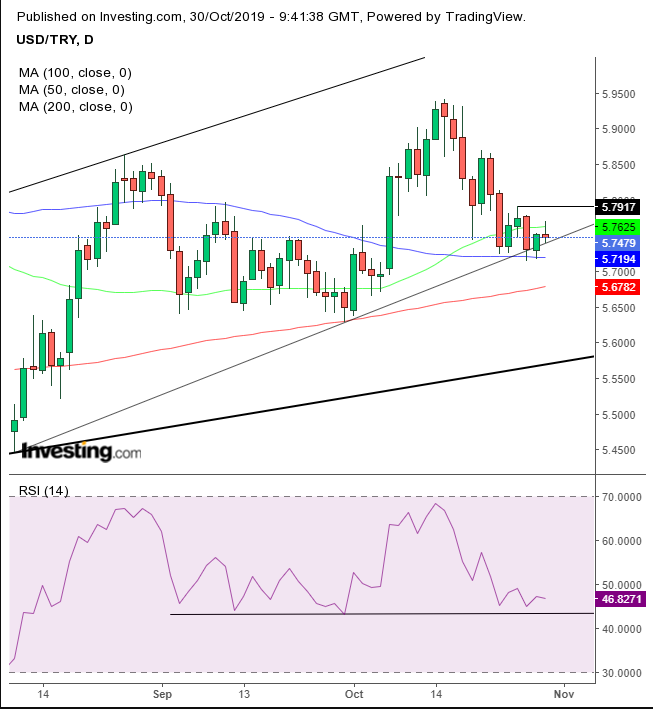Adaptimmune stock plunges after announcing Nasdaq delisting plans
Turkey's lira is on the path to a continued selloff after the U.S. House of Representatives yesterday voted to sanction the country over its actions against Kurdish forces in Northern Syria. Lawmakers also voted to recognize the Armenian genocide of a century ago.
While the latter move has no direct financial implication, Turkey has been resisting such findings for years, and the adverse diplomatic development may add to the impact on investor morale.
After the vote, the Turkish lira sold off by as much as 0.33%, on top of yesterday’s 0.36% advance. At 3:00 EDT, however, the currency plunged 0.36% within a single hour. No known fundamentals have been publicized. Therefore, it is likely to be on profit taking. Technically, however, we expect the lira to continue weakening.

The lira strengthened 21% between the late-January trough and the May high. The last peak must be bested to extend the long-term uptrend, but the USD/TRY has established a medium uptrend in the meanwhile.
The pair has registered two troughs and two peaks between the August low and the October high. The trading formed a rising channel, whose lower line marks the levels where demand kicks in, while the upper line tracks the levels where they take profit.
While today’s decline may have found resistance by the 50 DMA, the price demonstrated support in the last week of trading above the 100 DMA, after bouncing off the 200 DMA in forming the second trough on Sept. 30.
The RSI has reached a support level since early September, corresponding to the price range during that period. A break below would complete a double top in the momentum-based indicator, applying pressure to the price, but a rebound above 50 would signal a continued uptrend within the rising channel.
Trading Strategies
Conservative traders would wait to enter a long position after closing above the 5.8 level, having climbed above the Oct. 25 high, as demand absorbs all available supply at these levels. Then, they’d wait for a pullback to prove support by the uptrend line.
Moderate traders may enter a long position after registering a higher high in the short-term, above 5.8, then wait for a return move, for a better entry, not necessarily for evidence of a continued medium-term uptrend.
Aggressive traders may risk a long position now, relying on the established medium uptrend within the long-term uptrend, the bottom of the rising channel, above the 200 DMA – with the vote for sanctions presumably scaring off investors.
Trade Sample
